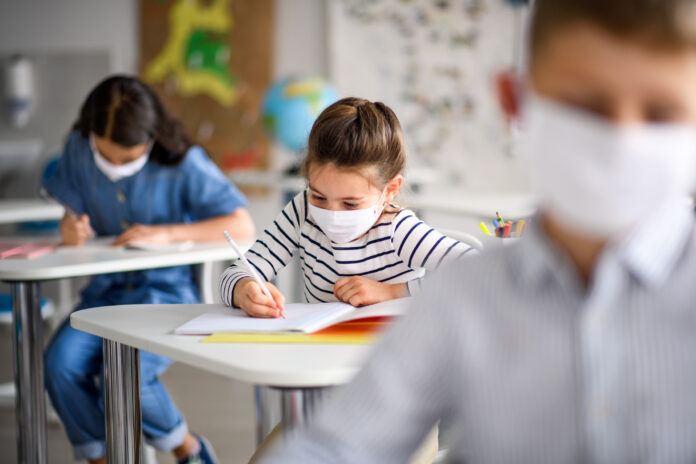By Marlo Safi
President-elect Joe Biden has pledged to reopen a majority of the nation’s schools within the first 100 days of his presidency, but an education expert explains that plan doesn’t reflect the urgency of returning students to school and that schools should have already opened.
One hundred days is nearly an entire school semester that will be spent behind a computer for thousands of students who are already suffering the consequences of prolonged distance learning, Frederick Hess, resident scholar and director of education policy studies at the American Enterprise Institute explained to the Daily Caller.
Biden has said that if Congress provides funding, his administration would push for a majority of schools to reopen by the end of his first 100 days in office.
While many schools are offering hybrid learning models, some of the nation’s largest school districts are closed for in-person learning, many with an indefinite return date. Some districts with reopening dates, including Chicago Public Schools, are being challenged by teachers unions seeking to delay returns.
“Schools absolutely should’ve opened already,” Hess told the Caller. “The facts are pretty clear that schools are not sources of community spread. If anything, the data suggests that schools are consistently safer for students and staff than the larger community, because kids are largely wearing masks, social distancing, and being supervised by adults.”
Data accumulated globally has shown that infections did not surge when schools reopened. Even when community transmission was high, coronavirus outbreaks in schools were still uncommon especially if precautions were in place, according to Nature.
Infectious disease expert Dr. Anthony Fauci has also recommended that schools should reopen and bars close as part of an effort to slow the spread of coronavirus while mitigating the impact of keeping children from the classroom.
Some families may have chosen not to send their children back to school if given that option because one or more high-risk people may live in the household. Hess says that families should be able to choose whether to send their children back to school, but many have not been given that option.
Districts have also faced friction from teachers unions who have made demands to their districts prior to reopening for in-person instruction. In Washington, D.C. , the city’s teachers union rejected an agreement with the public school system to reopen campuses in November. The Washington Teachers’ Union has lobbied for a provision to a tentative agreement reached a week prior that delineated the condition for returning to in-person learning. The provision would allow teachers to opt out of in-person teaching, according to DCist, but the school system did not support it.
Hess said that it’s entirely appropriate for schools to ramp up their efforts to provide personal protective gear, implement social distancing protocol, and other COVID-19 mitigation initiatives including accommodating high-risk teachers and staff.
“But beyond that, what we’re seeing is broad based resistance from teachers unions to reopen schools even when they’ve taken into account,” Hess explained. “It’s more convenient for some educators in this environment to be able to work from home. Again this is after districts have made good faith efforts to provide personal protective equipment and social distancing, and other efforts.”
The president of one of the nation’s largest teachers unions, the American Federation of Teachers, lauded Biden’s pledge to reopen schools within 100 days, calling it a “path forward for safe school buildings reopening.”
“Hallelujah! Unlike Trump, President-elect Biden understands that if we secure the resources and put the public health safeguards in place, we can open schools safely in the second semester—and his first 100 days,” Randi Weingarten said in a statement.
By the time schools do reopen, the “devastating” damage of nearly one year without consistent in-class instruction will have already impacted thousands of children, Hess said.
School districts across the country are reporting an increase in the number of students failing classes, often from missing assignments or skipped classes. The Fairfax County Public Schools released a report in November showing that the number of middle and high school students failing two or more classes increased by 83%.
“One hundred days is about 20 school weeks. That’s 4-5 months. That’s pretty much the end of the spring semester. 100 days pretty much means, for all intents and purposes, giving up on the rest of the school year. That seems unacceptable given what science tells us about community health.”
“You’re seeing huge numbers of kids reporting that they feel depressed, that they feel suicidal,” he added. (RELATED: ‘We Are Breaking’: Parents Describe How Virtual Learning Has Traumatized Their Children)
For families where parents can’t work from home, even an additional month of managing childcare arrangements so that their children are supervised during remote learning time is expensive and stressful. Biden’s projected timeframe could mean that caretakers need to prolong daycare until the summer months approach.
Hess said that given what’s at stake, there should be far more urgency about reopening schools.
“I think having some urgency about making sure we’re not closing schools unnecessarily is important. Unfortunately, I’m not sure that 100 days reflects sufficient urgency.”
Originally published by the Daily Caller. Republished with permission.







